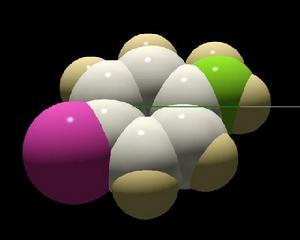Detailed introduction to endotoxemia

Detailed introduction to endotoxemia

Endotoxin testing
Since endotoxin is caused by the death, lysis or autolysis of bacteria, there is a large amount of endotoxin in the environment. There is no harm when endotoxin passes through the body's digestive tract. A small amount of it enters the bloodstream through injection or other methods and is inactivated by the liver's Kupffer cells without causing damage to the body. A large amount of endotoxin into the blood will cause a fever reaction-"pyrogen reaction". A large amount of endotoxin enters and accumulates in the blood, and exceeds the elimination ability of the body's respective health systems, which can lead to different degrees of endotoxemia. Drugs and medical devices that are easy to introduce endotoxin must pass endotoxin testing. The detection of endotoxin commonly used rabbit pyrogen method and limulus test method. The bacterial endotoxin test method included in the Chinese Pharmacopoeia includes two methods: gel method and photometric method, using limulus reagent to qualitatively or quantitatively detect endotoxin.
Classification of blood
Endotoxemia is a pathophysiological manifestation caused by the release of a large amount of endotoxin into the blood by the bacteria in the blood or the bacteria in the lesion, or the input of a large amount of endotoxin-contaminated fluid. Endotoxemia is divided into two categories: endogenous and exogenous.
(1) Causes of endotoxemia
In severe trauma, infection and other stress conditions, it can occur: systemic reticuloendothelial system dysfunction, decreased immune function, excessive endotoxin absorption by the intestine and exceeding the body's ability to eliminate; gastrointestinal mucosal ischemia, necrosis, and barrier destruction , A large amount of endotoxin is released into the blood; the endotoxin absorbed by the intestine enters the systemic circulation directly from the collateral circulation due to liver dysfunction; the infection of certain tissues and organs causes exogenous endotoxin into the blood.
(2) Clinical symptoms of endotoxemia
The clinical symptoms of endotoxemia are mainly determined by the host's resistance to endotoxin. Symptoms and signs include fever, changes in white blood cell count, bleeding tendency, heart failure, decreased renal function, liver damage, neurological symptoms, and shock. Endotoxin can cause the release of histamine, serotonin, prostaglandin, kinin, etc., leading to microcirculation expansion, reduced venous return blood volume, decreased blood pressure, insufficient tissue perfusion, hypoxia, and acidosis.
(3) The consequences of endotoxemia
Endotoxemia can occur in multiple diseases of multiple systems, usually leading to fatal septic shock, multiple organ failure, diffuse intravascular coagulation, etc., and the mortality rate is extremely high.
Endotoxemia can cause a series of pathophysiological changes:
①Fever response: endotoxin directly acts on the hypothalamic body temperature regulation center, or acts on white blood cells to release endogenous pyrogen
②Promote the release of vasoactive substances such as bradykinin, histamine, serotonin, etc., which lowers blood pressure, leading to microcirculation disorders, namely small and medium vascular atherosclerosis
③Causes leukopenia and thrombocytopenia, activates the coagulation and fibrinolysis system, and produces bleeding tendency; diffuse intravascular coagulation, such as cerebral thrombosis, etc.
④ Activate complement via C3 bypass or classical pathway
⑤Direct or indirect damage to the liver, such as fatty liver, etc.; cause glucose metabolism disorders and changes in enzymology and protein metabolism, such as diabetes, etc.
⑥ Activate the activity of leukotrienes, prostaglandins, macrophages, monocytes and endothelial cells to produce subacute and chronic inflammatory reactions.
(4) The incidence of endotoxemia in various diseases
Acute hepatitis 37-64%; fulminant hepatitis 58-100%; hepatitis C 61.54%; cholelithiasis with acute obstructive purulent infection 85%; burns 85%; sepsis 70%; multiple organ failure 100%; acute pancreatitis 90 %; skin and soft tissue infection 70-81.1%; abdominal cavity infection 72-84%; urinary tract infection 70-80% (nephritis), cancer 70%; pneumonia 100%; upper infection 100%.
(5) Treatment of endotoxemia
The treatment principles of endotoxemia are mostly advocated:
①Reduce the production and absorption of endotoxin
②Improve microcirculation disorder caused by endotoxin.
Endotoxemia
Many critically ill patients infected by non-gram-negative bacteria and patients in a state of stress have endotoxemia. The endotoxemia in plasma mainly comes from the absorption of intestinal endotoxins. Therefore, intestinal endotoxin blood Symptoms are the main cause of death of patients.
The pathogenesis of intestinal endotoxemia is related to the following aspects:
(1) Increased production and uptake of intestinal endotoxins (intestinal microbial translocation) The body's immune function is impaired and the intestinal mucosal immune barrier is destroyed, endotoxin translocates and enters the blood circulation; intestinal mucosal barrier dysfunction, mucosal ischemia, atrophy, Damage or shedding can cause endotoxin displacement and enteric endotoxemia; the intestinal micro-ecological environment is destroyed, and the long-term application of broad-spectrum antibiotics reduces the number of antibiotic-sensitive anaerobic bacteria, resulting in Gram-negative The bacteria multiply, break through the mucosal barrier and translocate into the blood circulation.
(2) The liver's ability to remove endotoxins is reduced, and a large amount of endotoxins overflow into the systemic circulation without detoxification in the liver.
(3) The portal system dysfunction, the portal system shunt occurs, the endotoxin from the intestine bypasses the liver, without inactivation and detoxification, flows into the systemic circulation, forming endotoxemia.
(4) The production of lymphatic fluid is increased, and the abdominal lymphatic-thoracic duct is an important alternative way for endotoxin to enter the systemic circulation.
(5) Peripheral blood endotoxin inactivation function is reduced, and the ability of peripheral blood to inactivate endotoxin due to various reasons is reduced, and enterogenous endotoxemia is prone to occur.
About Us
Creative BioMart is committed to offering customers constant satisfaction and help for their life science research, pharmaceutical research and biotechnology etc. by discovering, developing, manufacturing and delivering innovative quality products and services. This approach begins by exploring techniques to unravel the complexities of life science and understand the fundamentals of human biology.here are some our products: Endotoxin-free Accessories, LPS, TAL LAL Reagent, Endotoxin Testing Service, etc.